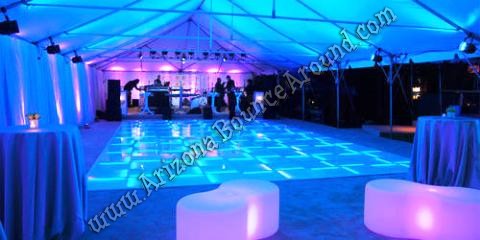Selecting the appropriate components for constructing a long-lasting and secure external performance surface is essential for guaranteeing an pleasurable session. Exterior movement platforms must endure diverse climate elements while offering a firm foundation for dancers and attendees. Thus, it is essential to consider factors such as material durability, safety attributes, and maintenance requirements when making selections. This article will explore several suitable materials and their advantages in designing an open-air dance floor.
One common option for exterior dance floors is timber. Lumber offers a traditional and warm aesthetic that many find appealing. Hardwoods like maple or oak are particularly preferred due to their strength and ability to cushion shock, which can safeguard dancers’ ligaments. Additionally, wood has natural slip-resistant properties when finished correctly, minimizing the chance of injuries. However, maintaining a wooden dance floor demands regular sealing and refinishing to protect it from moisture and ultraviolet exposure, making it essential to account for the environment in which the floor will be installed.

Another viable alternative is synthetic composites, which combine wood fibers with plastic. These composites are designed to be impervious to moisture, mold, and fading from UV exposure. Synthetic dance floors provide longevity similar to traditional wood without the intensive maintenance. They are more resistant to distortion and splitting than wooden floors when exposed to harsh environmental conditions. In addition, composite surfaces often have integrated anti-slip features, making them a safer selection for open-air occasions.
For those looking for a more contemporary solution, interlocking tiles made of PVC or rubber are excellent alternatives. These tiles are crafted for hassle-free setup and can be reconfigured or swapped as required. The flexibility of using interlocking tiles allows for quick setup and breakdown, making them ideal for short-term dance events or festivals. Additionally, these flooring types provide shock absorption that improves support while dancing and reduces the likelihood of accidents resulting from falls. The sealed structure of PVC and rubber also inhibits water penetration, additionally extending the lifespan of the dance surface.
Ultimately, it is crucial to evaluate the site and planned function of the exterior dance floor when selecting components. For instance, if the dance floor will be installed in a heavily used area or subjected to high quality portable dance floors harsh weather regularly, opting for durable surfaces that require low upkeep will be important. On the other hand, for lighter use or in more protected areas, less heavy options may be adequate. In any case, emphasizing safety aspects such as grip and impact resistance should stay at the center of design.
To summarize, constructing a durable and safe outdoor dance floor involves thoughtful assessment of various materials appropriate for different settings and applications. Timber provides classic aesthetics but demands diligent maintenance; engineered composites balance aesthetics with resilience; interlocking tiles provide versatility and convenience. At the end of the day, identifying the unique requirements of the dance floor's intended use will guide decision-making toward selecting the most appropriate material for an satisfying and More from the author secure dancing experience in outdoor spaces.